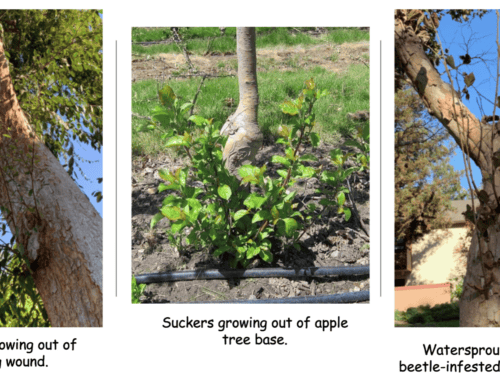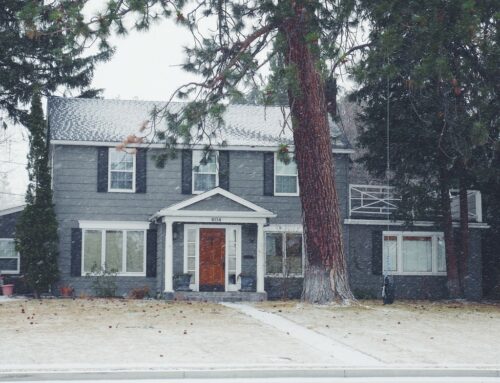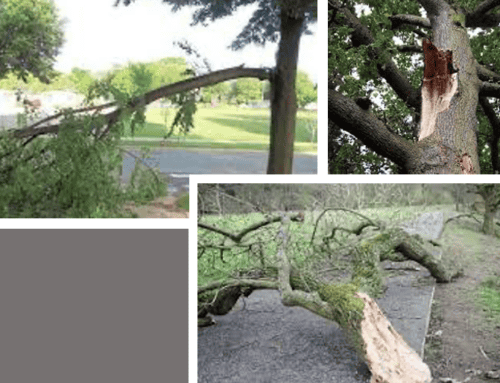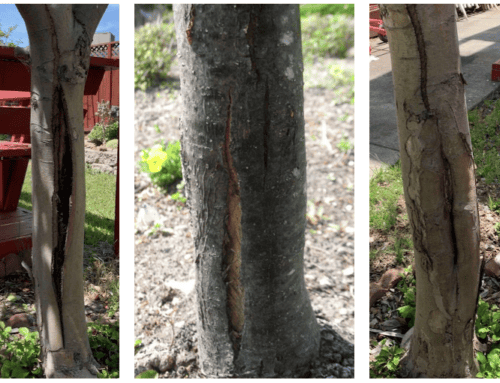Re-landscaping changes the environment your trees live in. Many of these changes involve the soil and the trees’ roots. Unhealthy roots are often the “root” of tree failures, so it’s important to understand how re-grading, root cutting, and ground covers affect soil and root health. Read on to make more informed decisions about your landscaping project.
Re-Grading
The majority of a tree’s root system is within the top 6-24” inches of soil. So grading down to 6” and adding inorganic ground cover (e.g. plastic sheeting, gravel, decomposed granite) will remove the soil’s organic layer and compact the soil, harming tree health. On the other hand, raising the soil level around a tree buries the trunk flare at the tree’s base. Trees with buried trunk flares are more likely to suffer from decay and inadequate root oxygen.
Soil organic matter and adequate soil aeration are critical for healthy tree growth, so the re-grading process could do overall harm. The trees may not die, but re-grading may create a stressful environment and make trees more likely to succumb to other problems like pests and bad weather.

Avoid cutting tree roots inside the yellow brackets (3-5 times trunk width).
Root Cutting
Be very careful if your re-landscaping involves root cutting. Roots are a key component in tree stability. According to the International Tree Failure Database, about 35% of tree failures are root related. A rule of thumb is to never remove more than 1/3 of a tree’s anchoring roots and to only cut roots on one side. Avoid cutting roots greater than 3″ in diameter if possible. And try to cut roots no closer to the trunk than a distance equal to three to five times the trunk’s width (see picture). When trees with cut roots fall over, they usually fall in the same direction the roots were cut, so consider the targets nearby if deciding where to cut. Root cutting is very risky and has unpredictable consequences, so be extra cautious if the tree is already leaning or is close to a house and other high-use areas.
Ground Covers
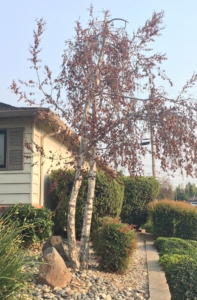
Birch trees in decline surrounded by stones. Stones don’t provide nutrients or water retention.
Trees absorb water and nutrients through their roots from the surrounding soil. The soil and ground cover properties greatly affect the roots’ health and ultimately, the tree’s health. Some common ground covers are decomposed granite, gravel, and stones. However, these materials raise soil temperature and don’t provide nutrients. And even though they’re porous, they don’t absorb water well.
The best ground cover is a thick layer of mulch around the base of the trees, which provides nutrients back into the soil, retains moisture, and helps moderate temperature. Spread a 2-4″ layer from the tree’s base out to the drip line, the point to which the branches extend. Make sure to leave the tree’s trunk and trunk base exposed to discourage pests and allow oxygen to reach the roots.
Gravel Around Trees: Is It a Good Idea?
Many homeowners consider using gravel as a decorative and low-maintenance solution around their trees. While it may look tidy, placing gravel around trees can come with hidden drawbacks. Gravel tends to trap heat, raising the temperature of the surrounding soil and creating stress for the tree’s roots, especially during warmer months. It also doesn’t break down or contribute nutrients to the soil, which limits long-term soil health. Additionally, gravel can lead to soil compaction over time, reducing the amount of air and water that reaches the root zone. If used, gravel should be applied carefully and kept away from the tree’s trunk to avoid trapping moisture that can cause rot. For the health of your trees, organic mulch is typically the better option—it nourishes the soil, retains moisture, and helps regulate temperature naturally.
Have you heard about our Arbor Mulch program? Learn how it can save you money!

